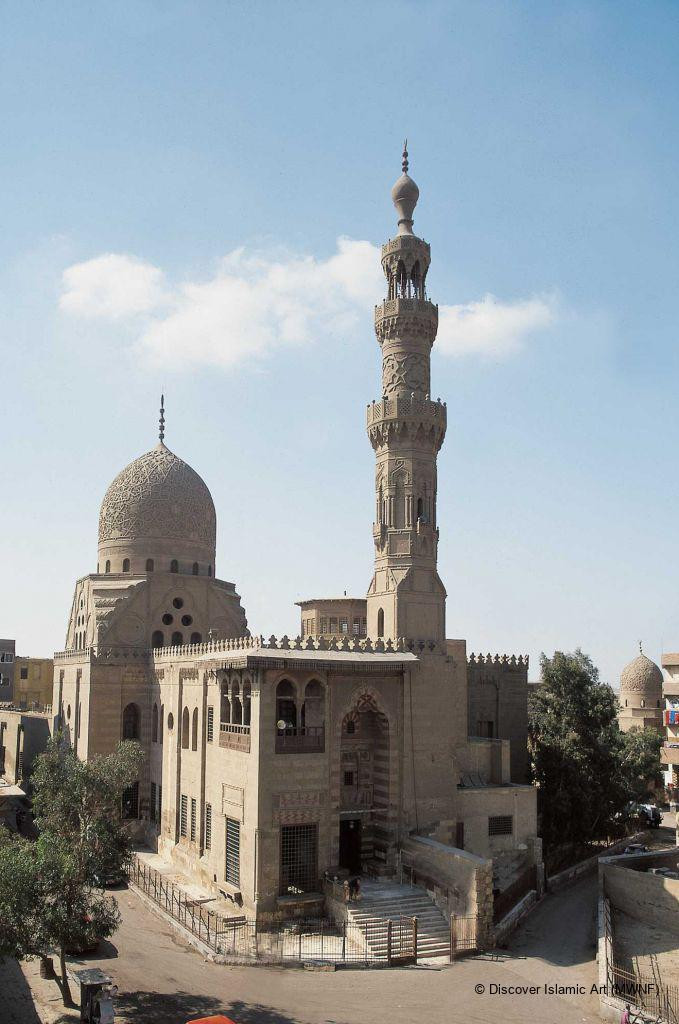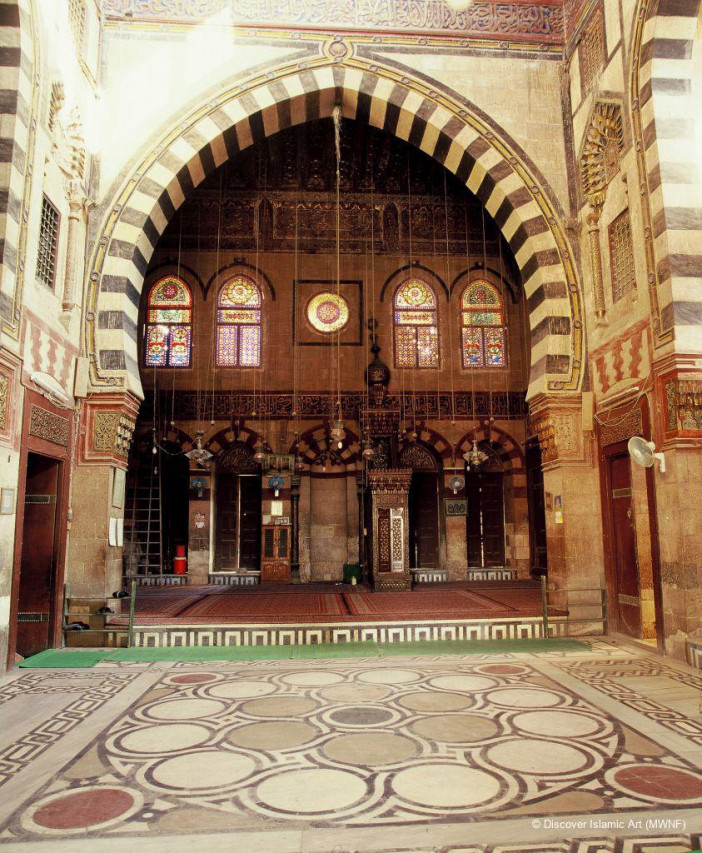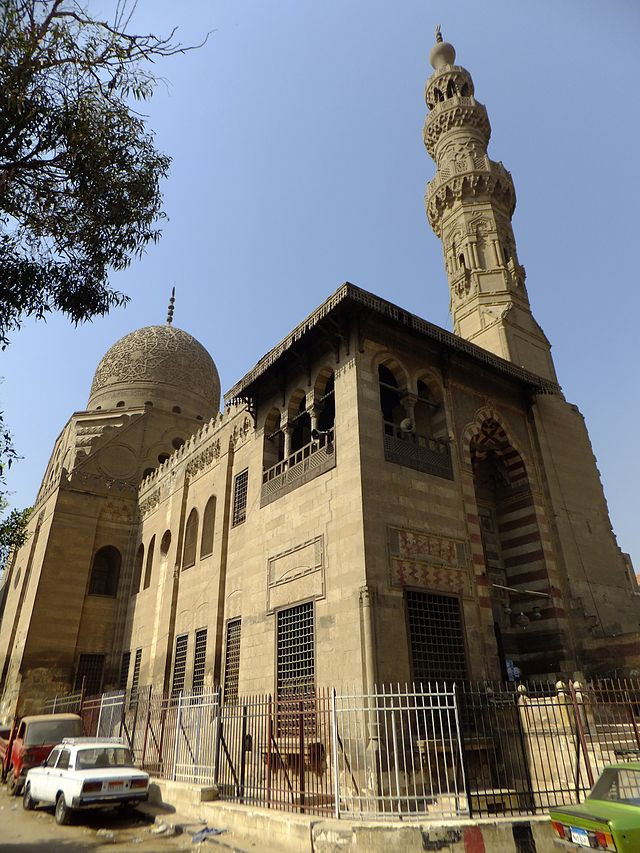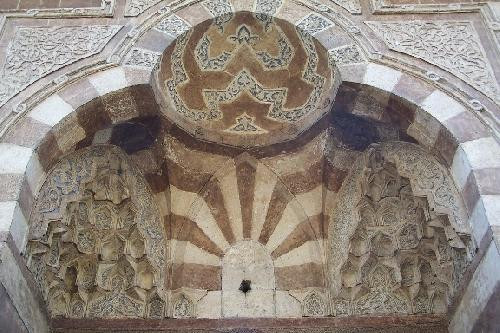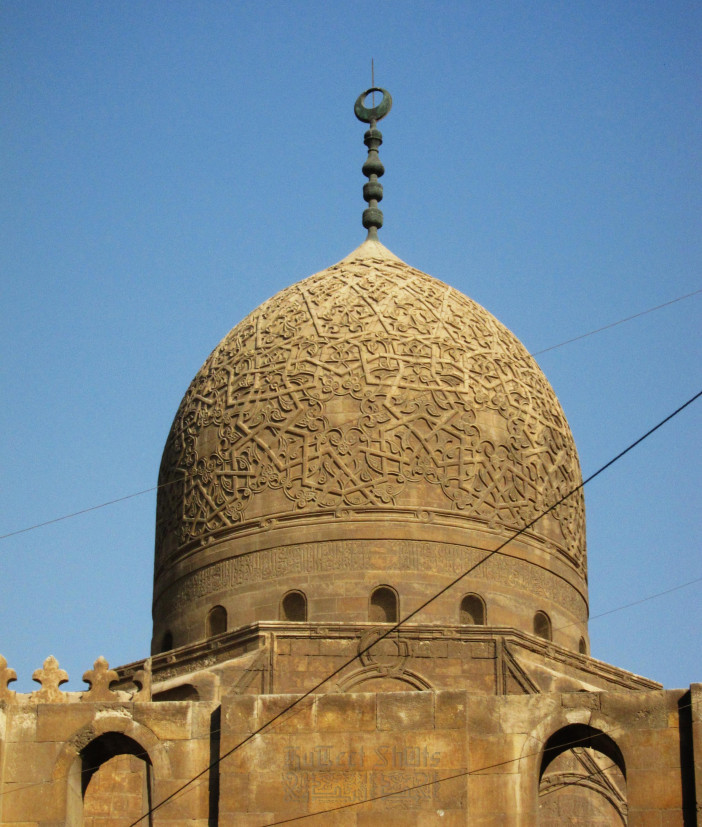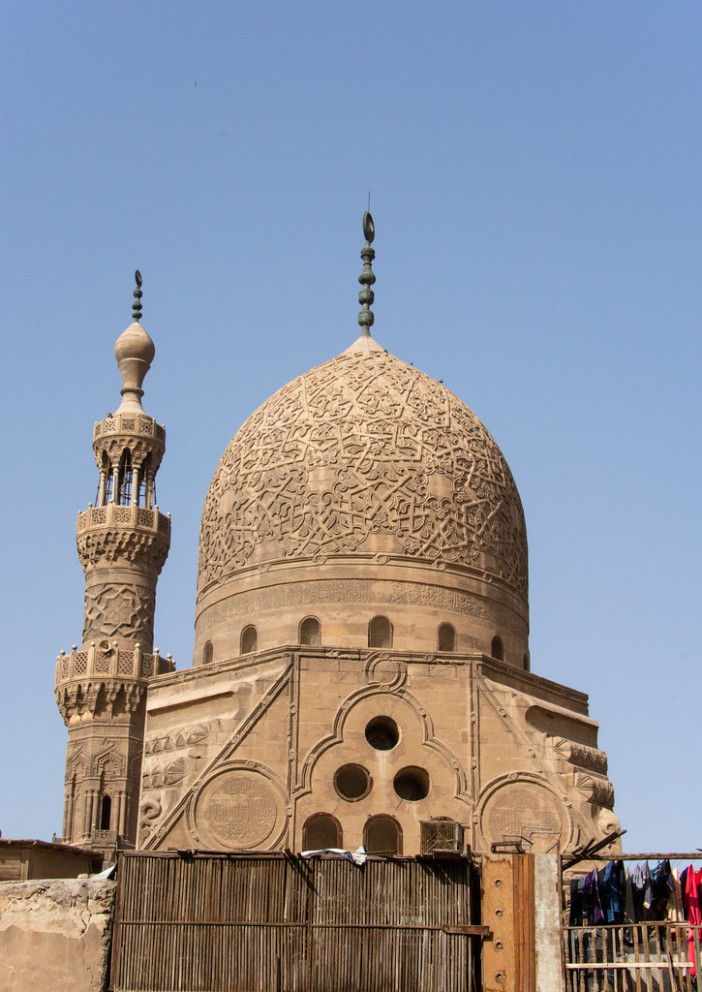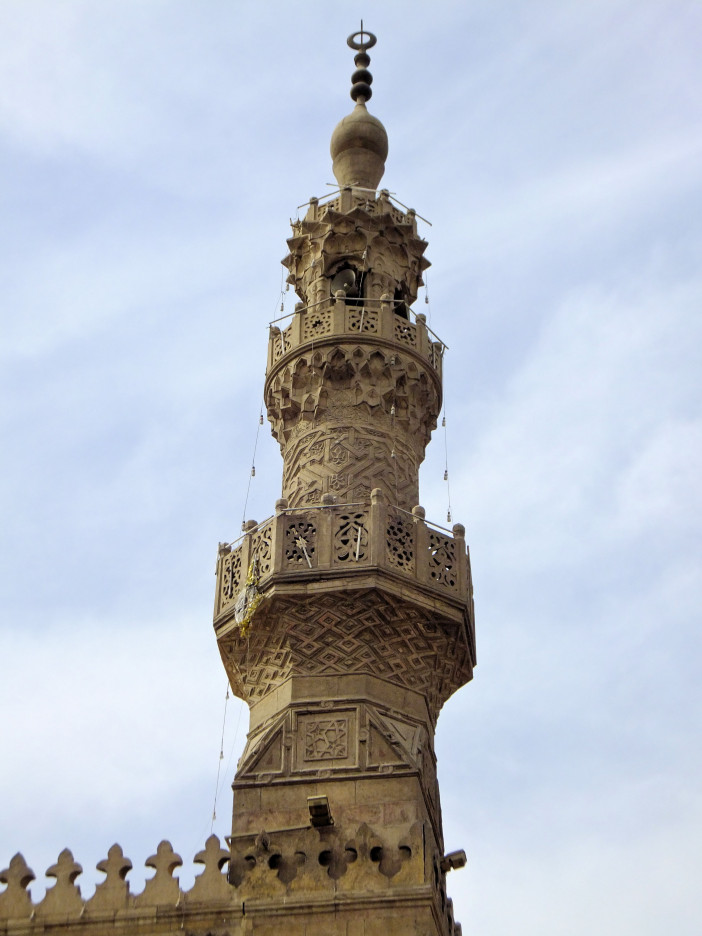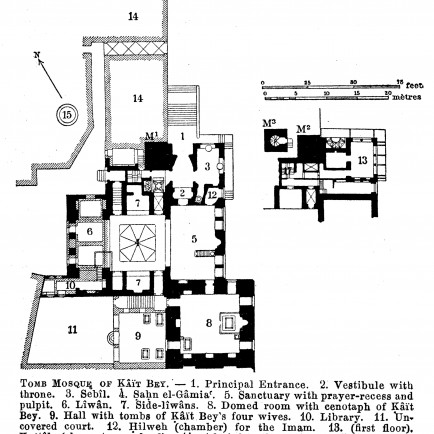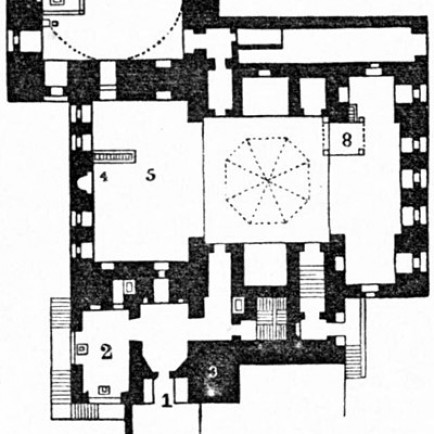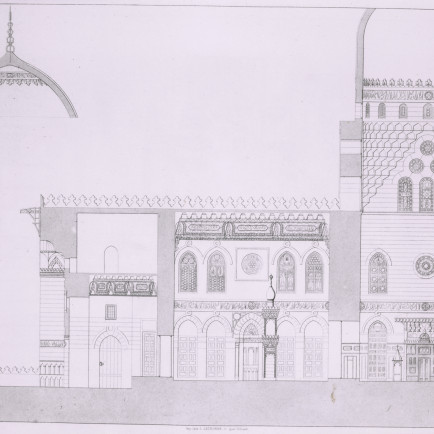Mosque of Sultan Qaytbay
History
The complex is dated on the basis of inscription strips, which record the name and title of the constructor and the date of construction. There is an inscription band beside the entrance to the madrasa and another in the higher reaches of the qibla iwan, both of which include the date when construction started (877 / 1472). In addition, there is an inscription strip inside the mausoleum, which includes the date on which the construction of the dome was finished (879/1474).
Urban and Architectural
The mosque (originally a madrasa), along with the mausoleum of the sultan, forms the main building of the complex and is considered exceptional for its refined proportions and the subdued yet exquisite decorations. The entrance to the mosque faces north and deflects the main road slightly easterly around the walls of the mausoleum, perhaps to accentuate its visual effect. The façade is in ablaq-style stone (alternating dark and light stone) and the entrance gate is enhanced by a high groin-vaulted recess with muqarnas. The minaret stands above the entrance on the west side and is beautifully carved in stone, divided into three storeys with richly carved balconies. The eastern corner of the façade is occupied by a sabil (from which water could be dispensed to passers-by) on the ground floor and by a kuttab (school) on the top floor. The former is marked by large windows with iron grilles, while the latter is marked by a loggia with open arches on two sides.
Description
The building was thoroughly restored by the Comité de Conservation des Monuments de l’Art Arabe in the late 19th century, and then again recently: the conservation of woodwork was still ongoing in 2014.
References
https://en.wikipedia.org/wiki/Funerary_complex_of_Sultan_Qaytbay
https://www.undeadcrafts.com/about1-cf96
Details
Location
Manshiyat Naser, Égypte
Worshippers
400
Owners
Sultan al-Ashraf Abu al-Nasr Qaytbay
Year of Build
1474
Area
1000
Drawings
Map
History
The complex is dated on the basis of inscription strips, which record the name and title of the constructor and the date of construction. There is an inscription band beside the entrance to the madrasa and another in the higher reaches of the qibla iwan, both of which include the date when construction started (877 / 1472). In addition, there is an inscription strip inside the mausoleum, which includes the date on which the construction of the dome was finished (879/1474).
Urban and Architectural
The mosque (originally a madrasa), along with the mausoleum of the sultan, forms the main building of the complex and is considered exceptional for its refined proportions and the subdued yet exquisite decorations. The entrance to the mosque faces north and deflects the main road slightly easterly around the walls of the mausoleum, perhaps to accentuate its visual effect. The façade is in ablaq-style stone (alternating dark and light stone) and the entrance gate is enhanced by a high groin-vaulted recess with muqarnas. The minaret stands above the entrance on the west side and is beautifully carved in stone, divided into three storeys with richly carved balconies. The eastern corner of the façade is occupied by a sabil (from which water could be dispensed to passers-by) on the ground floor and by a kuttab (school) on the top floor. The former is marked by large windows with iron grilles, while the latter is marked by a loggia with open arches on two sides.
Description
The building was thoroughly restored by the Comité de Conservation des Monuments de l’Art Arabe in the late 19th century, and then again recently: the conservation of woodwork was still ongoing in 2014.


